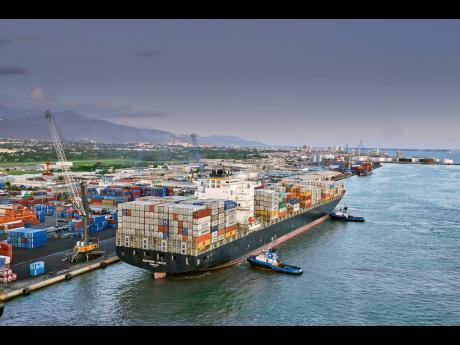How to secure your supply chain for the hurricane season
WITH THE Atlantic hurricane season officially under way, businesses must take precautions to ensure that their needs can be met should the worst happen.
For companies that count on the shipping and logistics industry for their stock, understanding and securing their supply-chain needs are particularly important.
Even a minor storm can have serious impacts on the supply chain, rerouting vessels, delaying deliveries, and slowing time-sensitive operations. The ensuing ripple effects can be disastrous for businesses and the wider public.
Having an appreciation for the people, infrastructure, and entities involved in the creation and delivery of these products could be the difference between a slight inconvenience and a major fallout for your operations.
Knowing the specific needs of your business and anticipating the challenges it may experience during and after a storm is central to reducing possible shocks to your operations and returns.
Overseeing your supply chain is a difficult function even without the threat of a tropical storm. However, preparation for the likely consequences will help to limit risk and aid recovery.
Today, Shipping Industry shares how companies may secure their businesses and supply chains during the hurricane season.
RISK ASSESSMENT
All companies stand to benefit from conducting a risk assessment, which looks at possible vulnerabilities of their respective providers in the supply chain, and forms the basis of a preparedness plan. It is crucial for businesses to know which aspects of their supply chain are most susceptible to disruption. That evaluation will guide decisions taken to introduce measures to mitigate the impact of storms during the hurricane season.
COMMUNICATION
Having clear and open lines of communication with your supply-chain partners is critical for hurricane preparedness. Not only will this allow you to keep track of shipments for internal purposes, but it also facilitates the timely communication of information to customers, which can go a far way in managing their expectations, allaying fears, and building confidence in your company and its services. This responsiveness is key to supporting your supply chain and providing accurate lead times for everyone concerned.
INCREASED TECHNOLOGY USE
Investing in technology that provides real-time access and information, particularly during disruptions caused by natural disasters, will allow companies to address growing and emerging problems expeditiously. Being able to track multiple shipments, orders, and receive accurate updates is essential to improved freight visibility and supply-chain management.
BUSINESS CONTINUITY PLAN
Developing a strategy for the continued operation of your business is a consideration that needs to be undertaken in advance of a hurricane so that you are not scrambling to do so should the worst occur. The plan should be known to your team and include, among other things, getting or reviewing insurance coverage, proposals for the resumption of business, and securing affected departments or locations from ensuing threats.
ALTERNATIVE SUPPLIERS
Hurricanes can unravel even the best-laid plans. As such, having options for suppliers, should your primary vendors be affected and unable to meet your needs, is important. Identifying and contacting these backup vendors must be done before a crisis as it will be near impossible and probably expensive to do so during and after. What’s more, having additional vendors can make your busy more responsive and keep you abreast of competitive rates.
The Atlantic hurricane season is predicted to have between 12 and 17 named storms before its October 31 end-date, according to the United States-based National Oceanic and Atmospheric Administration. Of that number, five to nine could become hurricanes, with one to four being major hurricanes ranging from categories three to five.

